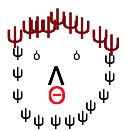
Objectives: by the end of this you should
- be confused!
- have a feeling for how complex the real workd is.
- understand what it means when we measure something
- understand what we mean when we talk about uncertainty and probability in quantum mechanics.

|
Objectives: by the end of this you should
|
I think I can safely say that nobody understands quantum mechanics. Richard Feynmann.
| Since the electron behaves as a wave, can do a Young's slits type experiment, and get usual 2 slit interference pattern: |  |
| This shows how it actually builds up in practice |
| Suppose we close off one slit: | 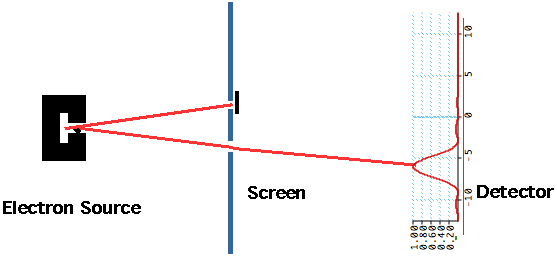 |
| Suppose we close the other slit: |  |
| Note when we add together two one slit patterns, we do not get two-slit patterns. | 




|
There was a young man who said "God
Must think it exceedingly odd
That this tree
Continues to be
When there's no one about in the Quad"
| slow electron is always reflected (low energy)
fast electron always goes over (high energy) |
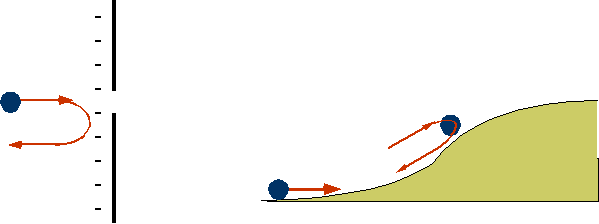 |
| Waves do not behave like this: they get partially reflected (remember what happens to light hitting glass). | 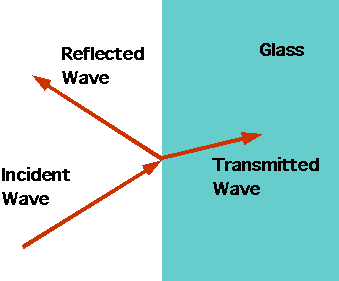 |
| If electron is literally the wave, | 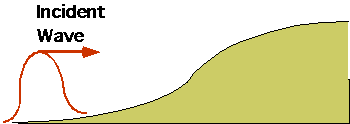 |
| this would imply we see 1/2 electrons | 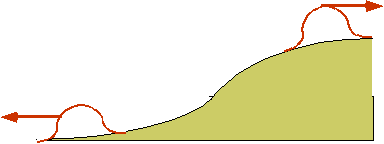 |
| e.g. for the electron in a box, in the first excited state | 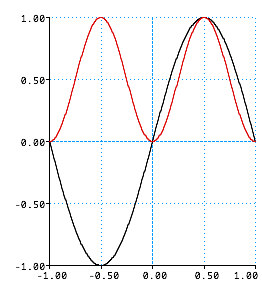 |
Probs must add to 1: P₁ = prob. that electron hits detector 1: P₂
= prob. that electron hits detector 2P₁ + P₂ = 1 |
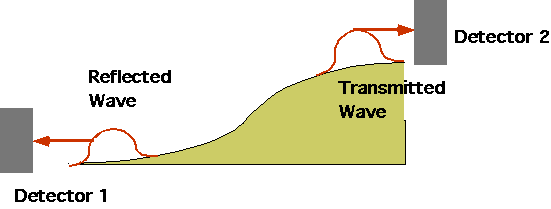 |
x
C
| e.g a H atom in the first excited state (n = 2)will decay to the ground (n = 1) state in about 10-10 s. and emits a photon | 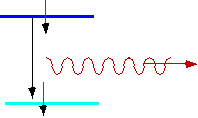 |
| Initially it is almost all the upper state |  |
| After some time it's a 50-50 mixture |  |
| Finally it is almost all the lower state |  |
| By measuring the atom, we can decide which of the two states it is in |  |
| e.g. consider light going through 2 sheets of polaroid at 90°. | 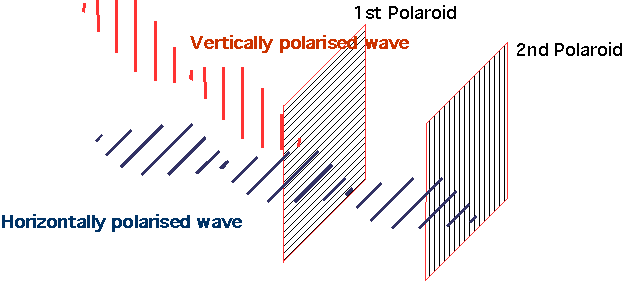 |
|

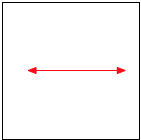

|
| Now insert a third sheet at 45° between the two | 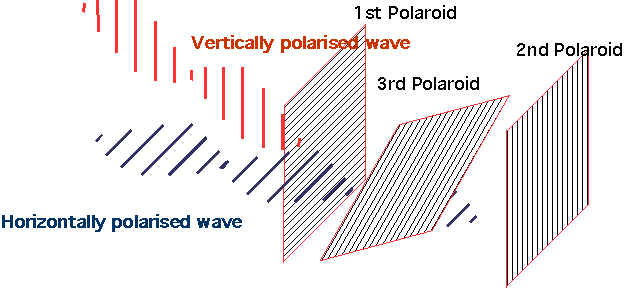 |


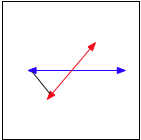
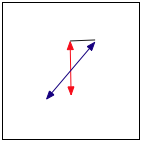
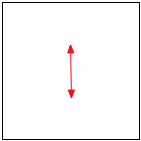
| E.g. go back to our wave function example: |  |
| This seemed to say that the electron gets split in half, but we interpreted it as a probability. |  |
| We can have a particle with no spin which decays into 2 particles with spin | 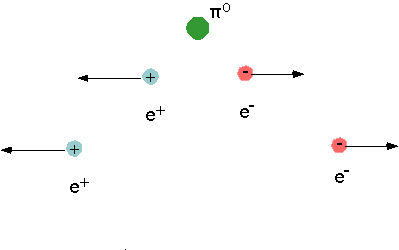 |
| There are two possibilities for the way the spins can arrange themselves: up-down |  |
| There are two possibilities for the way the spins can arrange themselves: down-up |  |
| Quantum Mechanic It is indeterminate until you measure them |  |
God does not play dice. Einstein
| The sophisticated version: you have a box, with a lid and a single radioactive atom: when the atom decays, cyanide gas is released. |  |
God not only plays dice, but throws them where they cannot be seen. Hawking
| EPR thought the states must be separate | 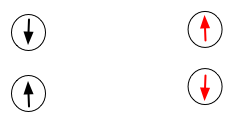 |
| They are actually one "entangled" state | 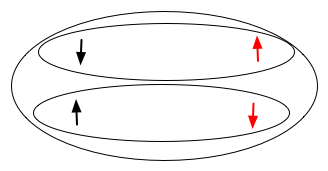 |
| and a measurement destroys it: e.g. | 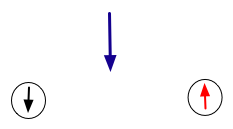 |
or the "watched pot effect":
Quantum mechanics is correct, and there is no "simpler" system
Reality is even uglier than we thought: e.g.
| Many-worlds theory: every time a measurement is made, the universe subdivides into separate universes that correspond to every possible outcome of the theory | 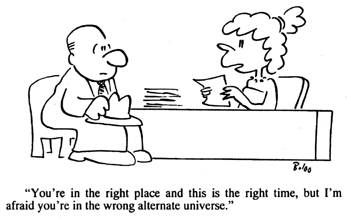 |